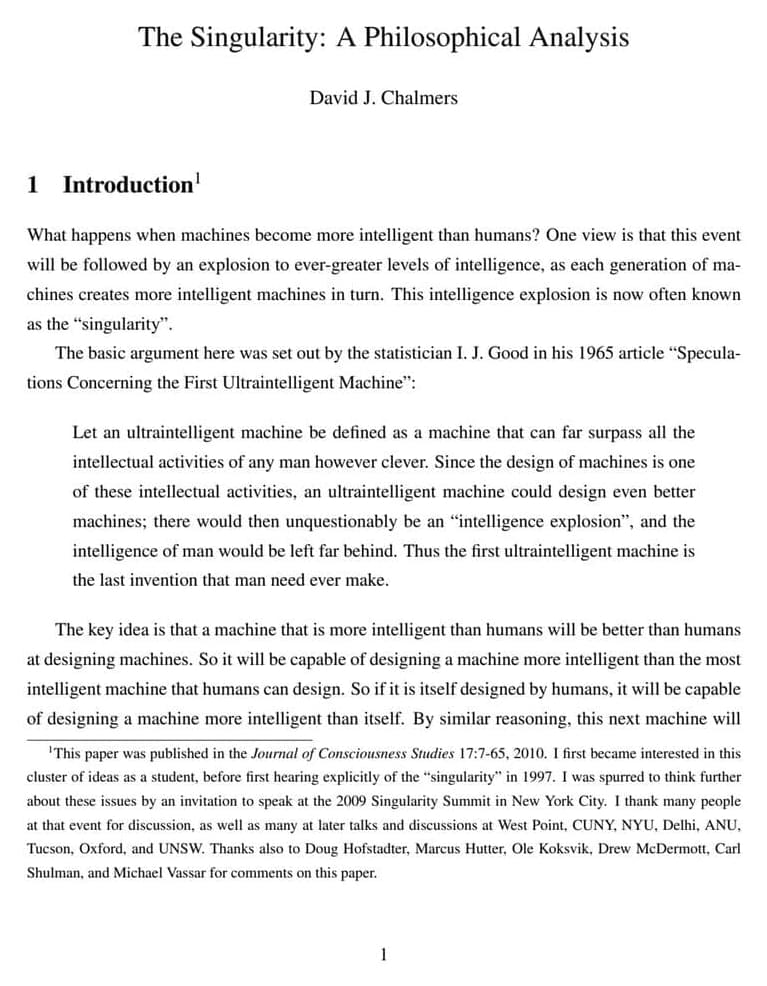Building the future with AI.
Get the latest international news and world events from around the world.


Fear is not an argument for rejecting artificial intelligence
Scientific knowledge can progress rapidly, yet its social, economic, and political impacts often unfold at a painstakingly slow pace. The medicine of the 21st century draws upon genetic and embryological breakthroughs of the 19th century. Our current technology is firmly grounded in quantum physics, which was formulated a century ago. And the topic of the day, artificial intelligence (AI), traces its origins to the secret weapons research during World War II.
In 1935, the brilliant British mathematician, Alan Turing, envisioned a conceptual computer. His genius would later lead him to crack the Enigma code used by German submarines for secret communications during the war. Turing’s contributions extended beyond cryptography, as he introduced fundamental concepts of AI, including the training of artificial neural networks. Benedict Cumberbatch portrayed Turing in the 2014 film The Imitation Game, which earned a screenplay Oscar that year. All this historical context brings us to the heart of the current AI revolution.
AI uses neural networks, also known as artificial neural networks, which are comprised of multiple layers of artificial neurons. Each neuron receives numerous inputs from the lower layer and produces a single output to the upper layer, similar to the dendrites and axon of natural neurons. As information progresses through each layer, it gradually becomes more abstract, resembling the process that occurs in the visual cortex of our brains.
The World Depends on 60-Year-Old Code No One Knows Anymore
An alarmingly large portion of the world’s business and finance systems run on COBOL, and only a small community of programmers know it. IBM thinks Watson can help, but it’s not guaranteed.
Launch HN: Rosebud (YC S19) — Turn game descriptions into browser games
Hackernews #1 @Rosebud_AI We’re building a platform to help users go from description to code to game. We aim to make game creation accessible to non-technical creators, so our UI provides explanations alongside the generated code.
Users have created a diverse range of games on Rosebud, including top-down RPGs, AI companions, and 3D obstacle courses, all within a few hours and sometimes minutes. Here are some examples you can play and clone (to start your own project).
* Anime Jester Companion: https://play.rosebud.ai/games/ba438cc4-246e-432e-b170-4e16948cd571 * Chat and Care for your Digital Puppy: https://play.rosebud.ai/games/f32a8159-7acf-4db6-a82c-70296f90bbf1 * Sphere Sync (3D game: align the sphere with the right color): https://play.rosebud.ai/games/96dfd5e1-62d4-47d8-a3e9-11038c8bb5cf * Basketball: https://play.rosebud.ai/games/a0e70622-e923-4517-8c1f-728dcf0db486 * Neon Waltz Generative Art: https://play.rosebud.ai/games/e32bd12b-7cc9-4f9a-b385-42ae0b096466 * Chat with Deku from My Hero Academia: https://play.rosebud.ai/games/716fd998-aab6-4185-8375-85d9eeb2adca
A simple way to think about Rosebud is ChatGPT + Midjourney + Replit. ChatGPT, because we give users a chat interface for this code editor so they can describe the game they want to make and generate game code; Midjourney, because we let users generate assets inside Rosebud, 2D and 3D, to be used in their games; And Replit, because Rosebud includes a browser based code editor that lets you deploy your game instantly.
Elon Musk Discusses Abundance, AGI, and Media in 2024 with Peter Diamandis
In this episode, Peter and Elon hop on X Spaces to discuss Data-driven optimism, solving grand challenges, uplifting humanity, Digital Super Intelligence, Longevity, Education, and Abundance in 2024.
Elon Musk is a businessman, founder, investor, and CEO. He co-founded PayPal, Neuralink and OpenAI; founded SpaceX, and is the CEO of Tesla and the Chairman of X.
Listen to spaces on X: https://x.com/PeterDiamandis/status/1742713338549997884?s=20

Samsung plans to eliminate humans from its chip fabs by 2030 — push for full automation continues at full steam: Report
Samsung Electronics has started the development of its “Smart Sensing System,” which is designed to improve yields and transform the way its semiconductor fabs operate. The system is primarily designed to monitor and analyze the production process in real time and currently can automatically handle plasma uniformity. Eventually, Samsung plans to make its fabs fully automated and free of human labor by 2030, reports DigiTimes, citing ET News.
Samsung’s ultimate goal is to have fully unmanned semiconductor production facilities by 2030. Achieving this will require developing systems that can manage large amounts of data and optimize equipment performance automatically. The Smart Sensing System is an important part of this plan and is expected to play a crucial role in making these intelligent, fully automated fabs a reality. Samsung is currently investing tens of millions of won into projects like smart sensors, hoping that its investments will pay off in the long run.



Processor made for AI speeds up genome assembly
(Nanowerk News) A hardware accelerator initially developed for artificial intelligence operations successfully speeds up the alignment of protein and DNA molecules, making the process up to 10 times faster than state-of-the-art methods.
This approach can make it more efficient to align protein sequences and DNA for genome assembly, which is a fundamental problem in computational biology.